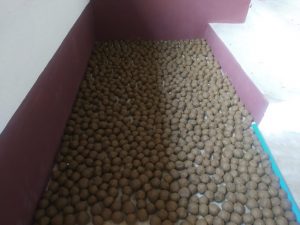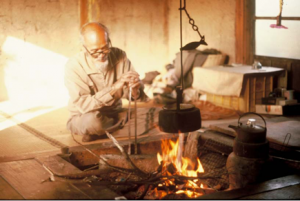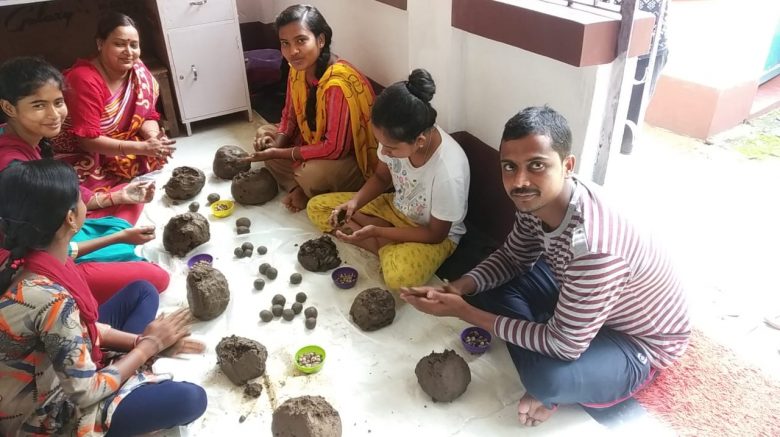Whether you are a gardening enthusiast or someone who feels strongly about the environment, you would agree that watching a plant grow is more than just a satisfying experience. We all love greenery anyway, so what is stopping us from planting some trees ourselves?
While green volunteers across the country have pledged to plant a sapling each, a fresh initiative is the preparation and dispersion of seed balls to grow plants and trees.
Laddu -sized balls of clay and seeds are not only cute to look at but also a fun activity to prepare with children and friends. Sowing seeds instead of saplings cost less and is a smart way to increase the forest cover without digging, watering, or weeding.
Using a slingshot and dispersing balls in areas that are remote or unapproachable is not only fun-filled but a smart act of gardening. It is not only a nature-friendly activity but full of fun and adventure as a project for school children and for activists who are keen to do their bit for the environment.

What are seed balls?
Seed balls are just that – little balls of the seed of plants or trees surrounded by a mixture of clay and cattle dung or compost. The latter adds nutrition and protects the seed from insects, birds, etc., while the clay ensures the balls remain in shape, undisturbed till they are dispersed and can germinate into the soil. After leaving them to dry, the balls harden enough to hold the seeds safely. We can then disperse these balls into any open spaces – near lakes, ponds, hills, or unused lands to grow into plants or trees.

Why do we need them?
You might read this and think, Okay, I get it. But why would I want to roll seeds and mud and not just plant saplings? Well, unlike saplings, seed balls do not need watering, maintenance, and fencing. It is easy to make, less expensive, and a sustainable way to grow trees. More significantly, seeds that germinate in free spaces develop long and deep roots that ensure their survival and healthy growth. On the other hand, saplings are usually grown in constricted containers such as tiny pots or plastic bags that limit their ability to grow deep roots and hence restrict their future growth and health. Besides, seed balls can grow anywhere, and with the ease of dispersal, they help us save time and our backs! If made in the right way by choosing seeds suitable for the objective, growing them is as simple as selecting and scattering the balls on open land at an appropriate time of the year. Seed Balls have long lives and can remain in the open till the rains germinate the seeds.

Short Roots of a Sapling due to constricted space to grow

Long roots of a seed grown in the soil – make the tree hardier and stronger
Planting balls as aides
While planting a sapling or a tree has its own merits and satisfaction, it is also time-consuming and sometimes dependent on others. Planting trees also need permission from the owner of the land.
Seed balls, on the other hand, can be dispersed on any land from a distance. It has given way to guerrilla-gardeners and environmental activists to use what they call ‘hand-green-aides’ as weapons in their fight against deforestation.
The story of seed bombing
As modern as the trend may sound, but the seed ball technique is ancient, probably used for thousands of years. People in Ancient Egypt used seed balls to plant trees on the banks of the Nile river after the annual floods. In other arid parts of the world, farmers coated seeds in clay to protect them while waiting for the rain or favourable weather for germination.
In our time, it was Masanobu Fukuoka, a Japanese advocate of natural farming and author of The One-Straw Revolution, who popularized this technique. Natural farming is farming without external inputs and the use of pesticides and chemicals.
Fukuoka believed that tilling large areas is effort wasted and can be rather harmful to soil health. Instead of intense labour and techniques, we should let nature decide what to grow and be in harmony with the local ecosystem. He coined the terms seed-bombing and no-till farming and inspired farmers and gardeners all over the world to re-green lands.
Seed Ball preparation
While the process of making seed balls seems pretty straight-forward, it is a bit less obvious than just mixing seeds and mud.

One point to remember while selecting the seeds is choosing indigenous plants that have higher chances of survival and can thrive in changing climates.
How it works
The dried clay outside of the ball keeps the seeds safe from insects, birds, rodents, and extreme weather. Inside, there is adequate moisture and nutrition available until germination starts.
The added compounds (some people add chili powder) act as deterrents for animals and prevent them from eating the balls.
A combination of seeds from different plants (that go along well together) also works well in seed balls and helps to increase plant diversity.

The fine print
Like everything else, seed balls are not free of conditions. While seed balls have worked perfectly well for forests, the challenge lies in planting them in urban areas or roadsides.
Planting seeds at the wrong time of the year or a location unsuited to the tree can cause it to stop germinating. Also, there should be no established plants in the area else the seeds will have to compete with existing plants for nutrition.
It takes a little knowledge of what plants grow in what region and climate to choose the right trees.
Dispersing seed balls over a large area may be difficult without the use of machines unless there is enough manpower – available in developing countries. While preparing thousands of seed balls, the manual labour of rolling the balls might seem too much in some areas. Automation and drone-dispersal can make the preparation and dispersal easy in such cases. With such a simple process, anyone can consider preparing their seed balls at home – here is the recipe.
Recipe for Seed balls
You will need:
Seeds of native plants/trees
3 Parts soil or clay
1 part vermicompost or cattle-dung
Water
Large tub for mixing ingredients
Large box for storing seed balls
Mix soil or clay with compost in a large tub.
Add water gradually and mix well until it becomes kneading consistency. Make balls of ‘laddu’ size for seeds of trees with the mixture. For small plants and shrubs, the seed balls could be smaller.
Stuff the seeds into the ball.
Roll the ball again to cover the seeds completely.
Dry the seed balls in the shade for at least 3 hours.
Store in a large box for future use.
References:
http://www.seedballskenya.com/seedballs/4593024001
https://www.motherearthliving.com/gardening/how-to-make-seed-balls
https://www.permaculturenews.org/2019/07/19/seedballs-part-1/
https://www.permaculturenews.org/2019/07/30/seedballs-part-2/

